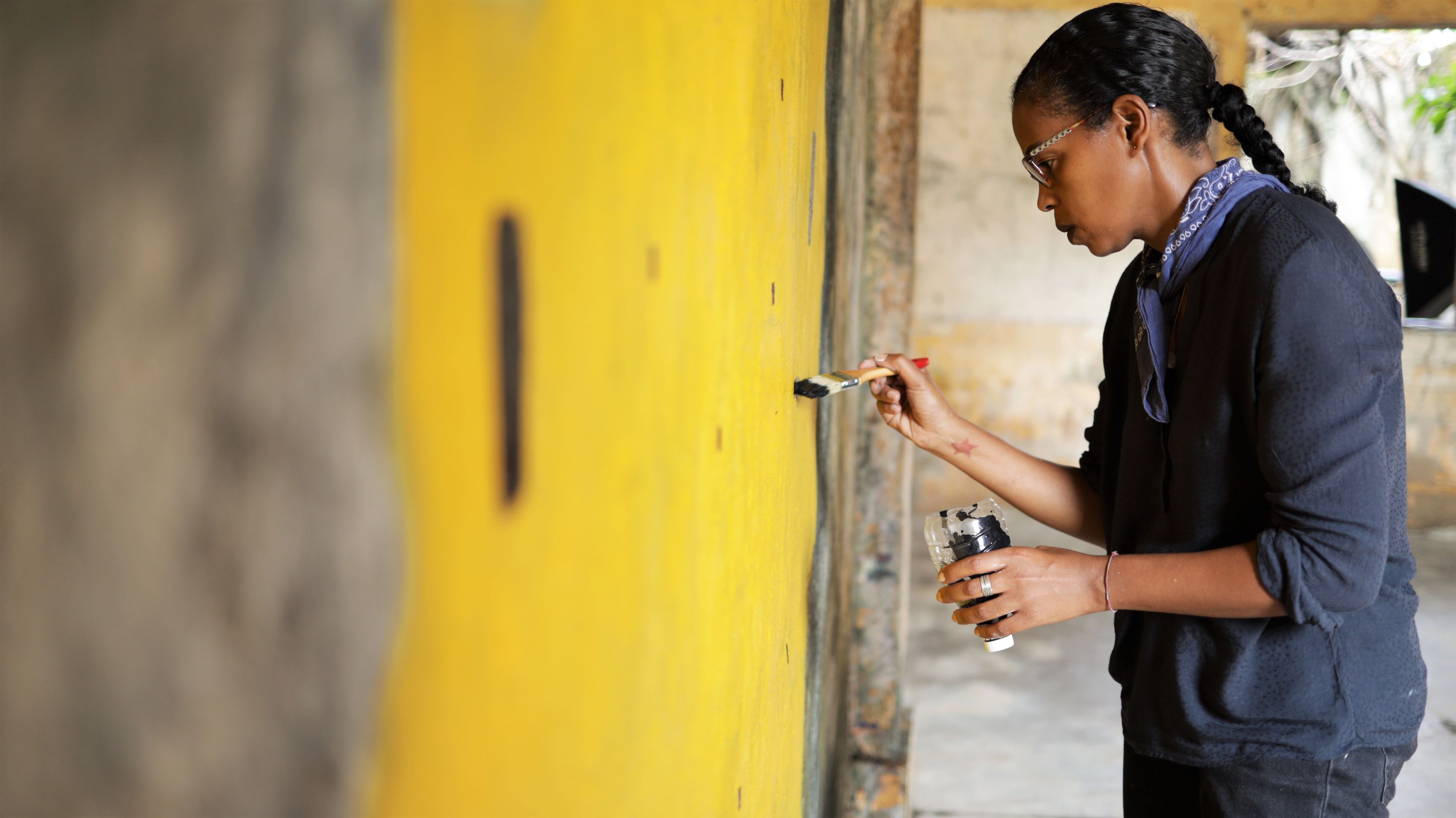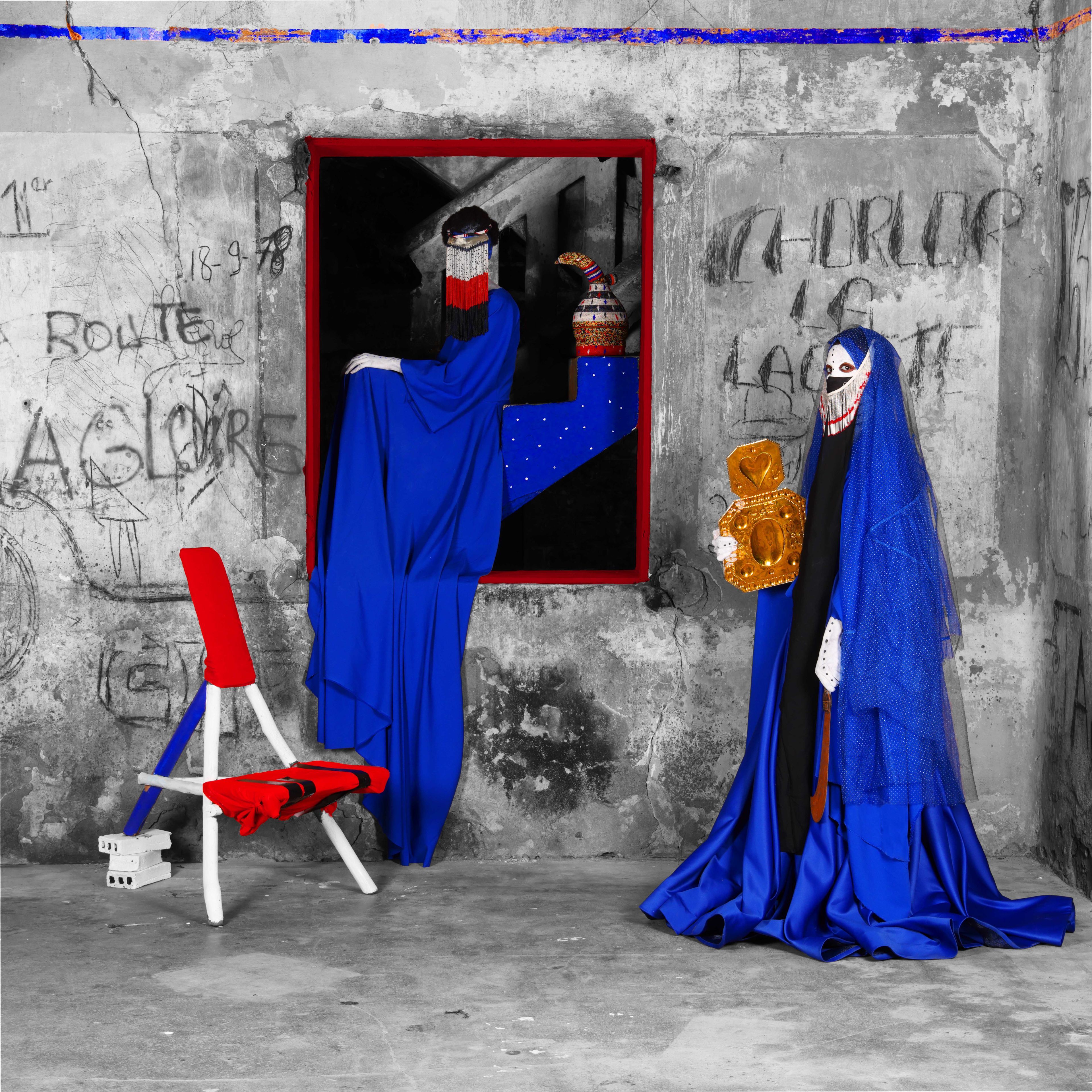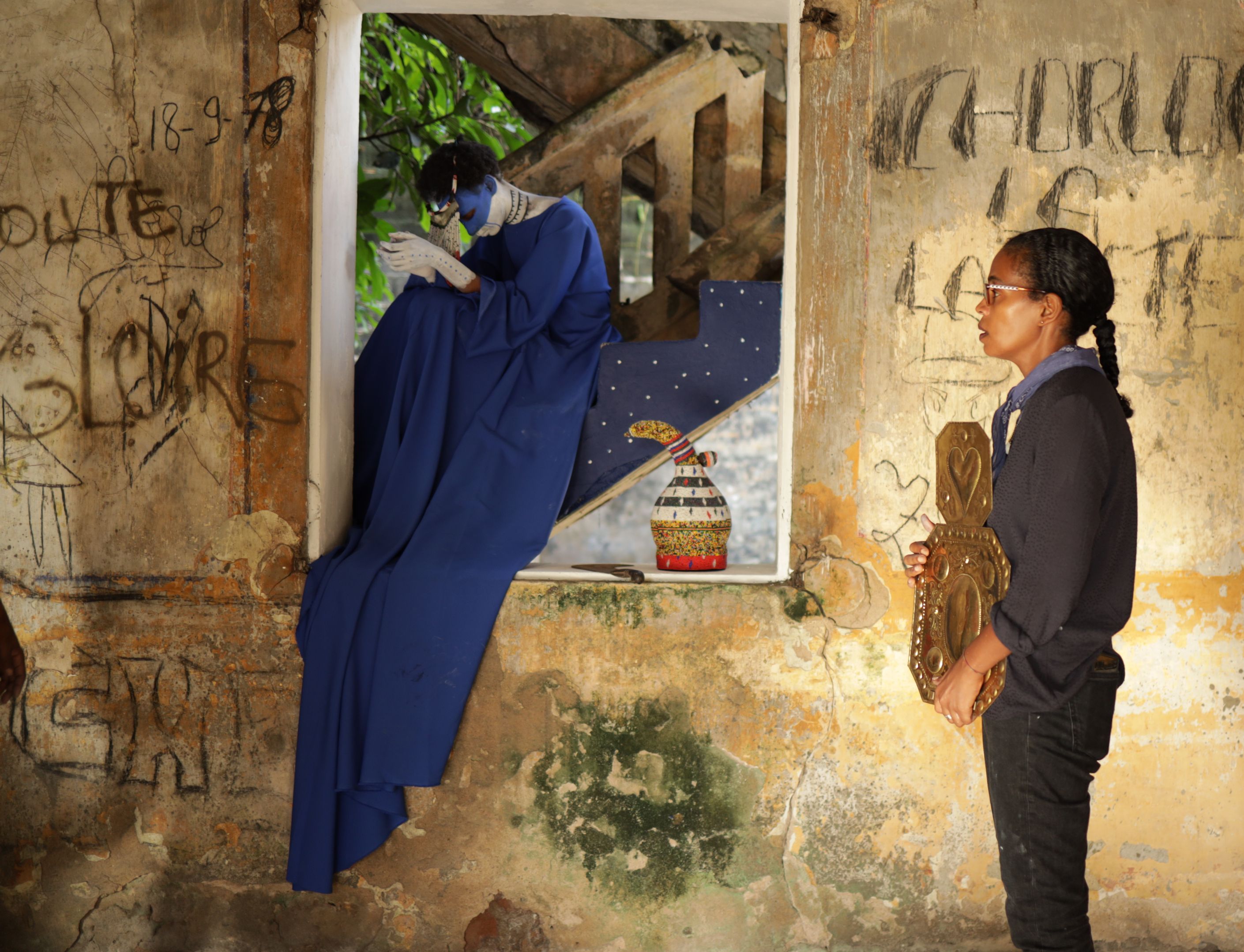Path of lost lives
As part of the annual tradition of creating the Nobel Peace Prize Exhibition, the Nobel Peace Center select and commission a photographer to portray the work or theme of the new Peace Prize laureate.
Aïda Muluneh was selected as the 2020 Peace Prize Exhibition photographer, and her mission was to illustrate how food and hunger is being used as a weapon in war and conflict. The 2020 Peace Prize was awarded the World Food Programme for its efforts to combat hunger, and the efforts to provide food security to conflict-affected areas.
The result of Muluneh’s mission was a photo series containing ten different images - all with Muluneh’s unique conceptual expression. The photos depict ten historical examples where food was or is used as a means of power in war.
Muluneh wanted to create her own artistic interpretations of the different situations. Many people today are tired of media’s traditional portrayal of hunger and famine, and it was therefore important to show the topic from a new perspective and with a different photographic genre.
In the photo series' title image Road of Glory, Muluneh has interpreted the humanitarian catastrophe that is taking place in Yemen. She herself has a close relationship with the country, after spending several of her childhood years in the city of Sanaa. Muluneh has vivid memories of the city's life, the buildings and colors. And that is why the photo series' title image is very personal to her. When she was commissioned to create the photo series for this year's Peace Prize Exhibition, Yemen was the first country she thought of, she says.
"I have vivid memories of the city, the colors, the buildings and people. And to think about its war-torn state now, it’s hard to believe."
Muluneh wanted to shed a light on Yemen, because it is the worst humanitarian crisis created by political disagreement and conflict of our time. She describes the situation in Yemen as a disaster, and she wanted to explore the catastrophe by drawing on Yemeni traditions and culture, but also to convey the destruction.
"When we speak about hunger, we must explore all the components that lead to the stage of hopelessness. If we are to end the suffering of the masses, it must be with an understanding of the catalysts that destroy the stability and fabric of society.”
The photo Road of Glory was taken in an abandoned building in Abidjan on the Ivory Coast, where Aïda Muluneh currently lives and works. The title of the photo was created by chance from old graffiti that was tagged on the wall: "Route à Gloire" (which means "the road to greatness" in French). Muluneh thought the graffiti was descriptive of the current situation in Yemen. She explains that both sides in the conflict are fighting for power and greatness, while the war itself becomes the path to doom for Yemen.
In the photo, you can see a staircase through a window. Muleneh explains that the staircase is a metaphor for the history of Yemen, a story of the ascension and descent of a nation and its people.
The chair in the photography was found by chance at the location and wre included in the photo as a symbol of the unstable political power in the country.
Furthermore, you can find several types of objects in the photo, including a golden plaque, a sword and a veil. With these objects, Muluneh wanted to include traditional and decorative Yemeni objects to express loss. Not only the loss of life, but also the loss of the ancient cultural heritage of an early civilization. The veil, on the model in the staircase, is the color of the Yemeni flag and is a symbol of pride. At the same time, it is also a symbol that one can become blind to nationalism, ethnicity and religious beliefs.
The two women in the picture is the embodiment of two different stories. The first is about the strength and resilience of all Yemeni women - all the mothers who have to go to bed hungry because they gave what little they had of food to their children. In one hand, the model holds the golden plate, which in this story symbolizes love. In the other hand a knife, which symbolize culture and strength.
The second story is based on the headdress. The headdress is inspired by the traditional wedding dresses worn by women in Yemen. Muluneh included this as an homage to the 130 people who died at a wedding in Yemen after it was hit by an air strike in 2015.
"I couldn’t possibly imagine the emotions of such devastating loss at a moment that was supposed to be a joyous new beginning for two lovers but instead became the end."
Aida Muluneh’s photo essay is available on nrk.no. The Nobel Peace Prize exhibition 2020 will be physically opened at the Nobel Peace Center when Covid-19 restrictions allow.
The exhibition is supported by Yara International (Nobel Peace Prize Celebration Partner 2020), Canon (print partner) and Bergesenstiftelsen.
Share:


